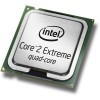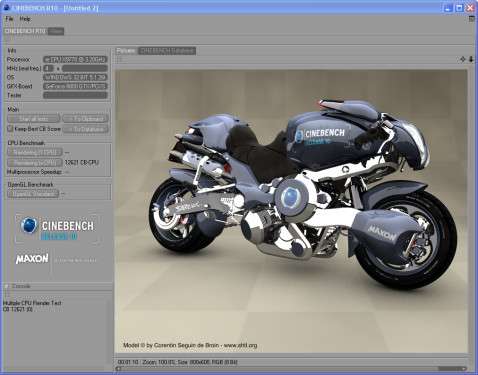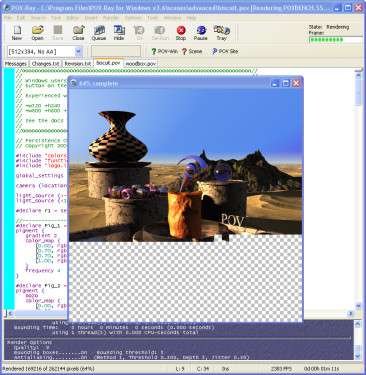- Qualcomm Launches Snapdragon 4 Gen 2 Mobile Platform
- AMD Launches Ryzen PRO 7000 Series Mobile & Desktop Platform
- Intel Launches Sleek Single-Slot Arc Pro A60 Workstation Graphics Card
- NVIDIA Announces Latest Ada Lovelace Additions: GeForce RTX 4060 Ti & RTX 4060
- Maxon Redshift With AMD Radeon GPU Rendering Support Now Available
Intel Core 2 Extreme QX9770 Performance Preview

We took a look at Intel’s first 45nm desktop offering a few weeks ago and already have a preview of it’s successor. The QX9770 is equipped with a 3.2GHz frequency and is the first Intel CPU to support a 1600MHz Front-Side-Bus. Read on to see how it compares to the rest of our fleet.
Page 7 – Multi-Media: Cinebench 10, POV-Ray 3.7, 7-Zip Archiving
Cinebench R10
Like 3DS Max, Cinema 4D is another popular cross-platform 3D graphics application that’s used by new users and experts alike. Its creators, Maxon, are well aware that their users are interested in huge computers to speed up rendering times, which is one reason why they released Cinebench to the public.
Cinebench R10 is based on the Cinema 4D engine the test consists of rendering a high-resolution model of a motorcycle and gives a score at the end. Like most other 3D applications on the market, Cinebench will take advantage of as many cores as you can throw at it.

The QX9650 came close to hitting the 12K mark last month, but the QX9770 pushed it out of its way and blew through that goal.
POV-Ray 3.7
POV-Ray is a ray tracing application which can render scenes with outstanding results. There are three major benefits of this application. First… it’s free. Second, it has a built-in benchmark that’s capable of stressing all of your processor’s cores and also scales well with frequency. Third, it’s available on a variety of platforms. There’s little doubt it’s an application that deserves inclusion in our processor reviews.

The QX9770 was the first CPU to break through the 12K mark in Cinebench, and now it’s the first to break through 2K in POV-Ray!
7-Zip Archiving
If you are a power-user and love free software (such as myself), then you no doubt have heard of 7-Zip. Although the application is similar to other compression applications on the market, such as WinZip and WinRAR, 7-Zip is completely free and lacks nothing that you need to effectively archive your documents.
For our test, we take a 4GB folder that’s complete with pictures, music, documents and other random files and compress it to a .7z file using both the LZMA and Bzip2 algorithms.
Bzip2 is my preferred algorithm as it’s faster thanks to multi-threadedness, but the drawback is that the resulting filesize is ~1% larger than what LZMA will export. Of course, whether or not that extra 1% is worth your extra time or not is a personal decision. We are using both algorithms in our tests since both are widely used.

You know that multi-core processors are finally catching on when even your archiver takes advantage of all four cores. The differences between our Dual-Core and Quad-Core results is staggering, with the QX9770 not surprisingly taking the lead.
Support our efforts! With ad revenue at an all-time low for written websites, we're relying more than ever on reader support to help us continue putting so much effort into this type of content. You can support us by becoming a Patron, or by using our Amazon shopping affiliate links listed through our articles. Thanks for your support!







